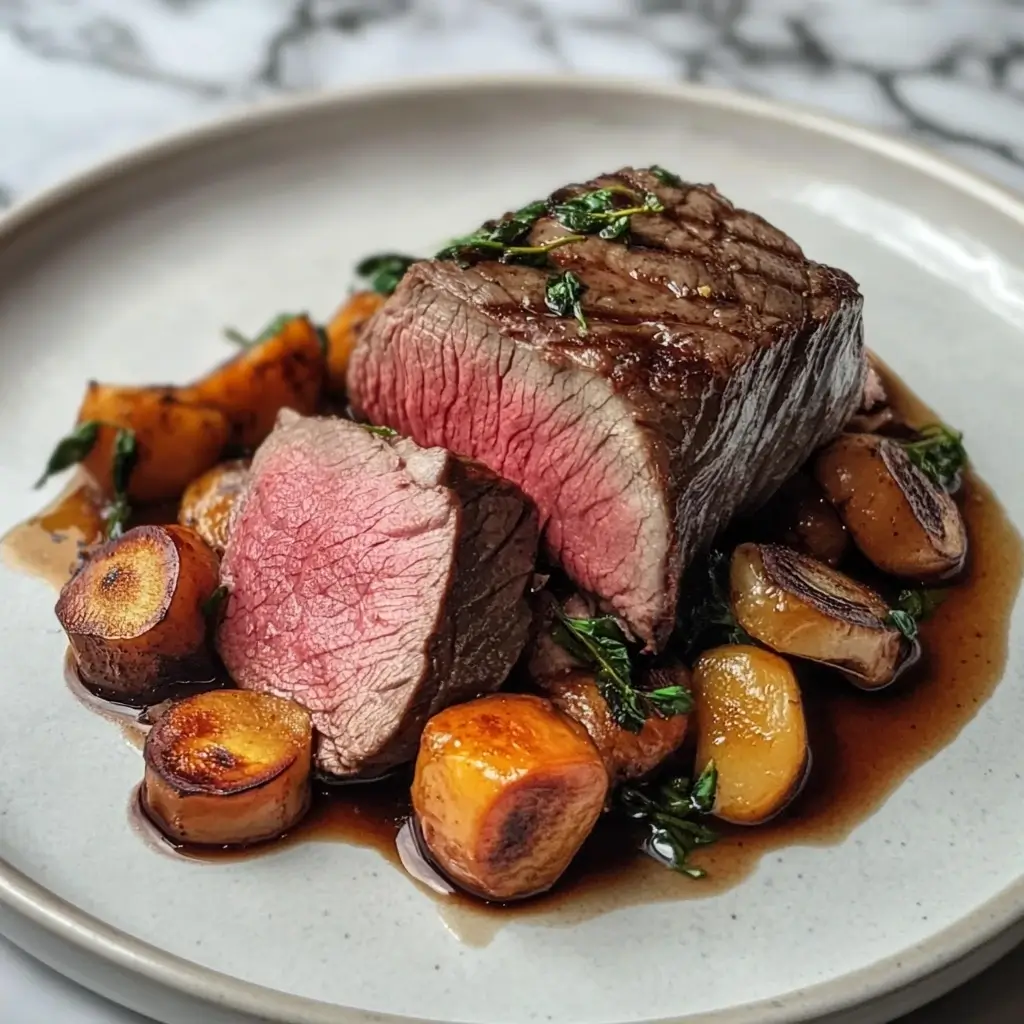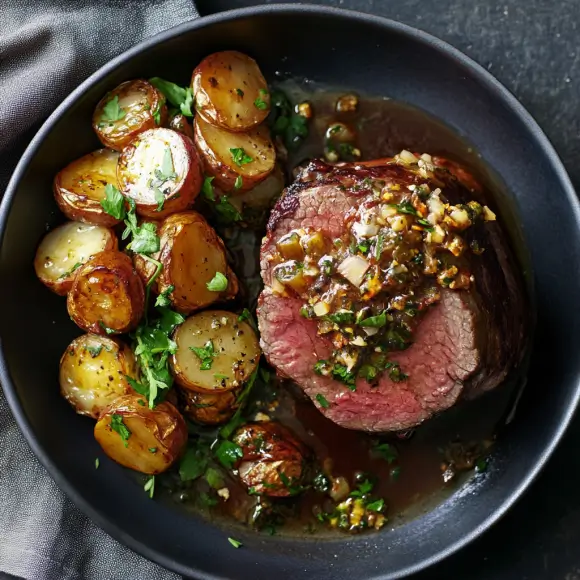- Introduction to Silverside Beef
- The History and Origin of Silverside Beef
- Health Benefits of Eating Silverside Beef
- How to Choose Quality Beef at the Market
- Preparation Essentials
- Seasoning Techniques for Enhancing Flavor
- Step-by-Step Cooking Instructions
- The Role of Marbling in Silverside Beef’s Texture
- Using Silverside Beef in International Cuisines
- Serving and Pairing Suggestions
- Common Mistakes to Avoid
- Creative Ways to Use Leftover Silverside Beef
- Comparing Silverside Beef to Other Beef Cuts
- Conclusion: Mastering the Silverside Beef Recipe
Introduction to Silverside Beef
Silverside beef is a simple and affordable cut of meat that works well in many recipes. To start, its lean texture and strong flavor make it a great choice for hearty meals. For instance, you can use it to prepare a slow-cooked stew or a roast. Additionally, learning the right preparation and cooking techniques ensures tender and tasty results every time.
Moreover, silverside beef is incredibly versatile, allowing you to explore a range of cooking styles and flavors. For example, you can marinate it for added depth or pair it with simple herbs to highlight its natural taste. In fact, this cut of meat works well in both traditional and modern dishes, giving you plenty of options to experiment.
As a result, adding silverside beef to your meals not only enhances your cooking skills but also guarantees delicious and satisfying results. Ultimately, it’s a great way to create memorable dishes for any occasion.
The History and Origin of Silverside Beef
Silverside beef has been part of European cooking for centuries and is now popular worldwide. It gets its name from the thin, silver layer on the meat, which makes it unique. It is ideal for slow cooking as it absorbs flavors and stays tender.
During wartime, the UK popularized it in corned beef recipes because it was easy to store. Over time, it became loved for its use in many recipes across cultures.
Its versatility means it works well in stews, roasts, and more, making it a reliable choice for all kinds of meals. As a result, it is now a kitchen staple around the world.
In short, cooking with silverside beef means creating a tasty dish while honoring its history. For more information, this guide explains the differences between silverside and corned beef.
Health Benefits of Eating Silverside Beef
Including silverside beef in your diet offers several nutritional benefits. This lean cut is rich in protein, essential for muscle repair and growth. It is also a valuable source of vitamins and minerals like:
- Iron: Helps combat fatigue and supports red blood cell production.
- Zinc: Boosts the immune system.
- B vitamins: Supports energy metabolism and brain health.
Because silverside beef contains less fat compared to other cuts, it is a healthier choice for those monitoring their fat intake. However, pairing it with fresh vegetables and herbs can improve its nutritional profile further. Opting for lean cuts like silverside allows you to enjoy flavorful meals without compromising on health.
Its nutritional benefits make it a standout among other cuts, but how does it compare to brisket? This comparison guide tries the differences, helping you choose the right cut for your recipes.
How to Choose Quality Beef at the Market
Shopping for quality beef guarantees the success of your meal. Choose cuts with a bright red color and firm texture. Small amounts of white fat, evenly distributed, indicate good quality. Fresh beef should also have a clean, mild scent. Ask your butcher for their freshest cuts or tips on cooking techniques. This proactive approach improves every silverside beef recipe.
Preparation Essentials
Proper preparation is the foundation of a great silverside beef recipe. Here are the essentials:
- Defrost properly: If using frozen beef, defrost it in the fridge overnight to maintain texture and flavor.
- Trim excess fat: While some fat is desirable for flavor, too much can affect the final dish.
- Pat dry: Use paper towels to remove moisture, ensuring a good sear during cooking.
- Bring to room temperature: Let the beef sit out for 30 minutes before cooking to guarantee even heat distribution.
Taking these steps guarantees your silverside beef is primed for cooking, whether you’re roasting, slow-cooking, or pan-searing.
Seasoning Techniques for Enhancing Flavor
The right seasoning truly transforms silverside beef into a flavorful masterpiece. To achieve the best results, you should follow these proven techniques:
- First and foremost, generously sprinkle salt and pepper over the meat for a classic and timeless approach that never fails to improve its natural taste.
- Additionally, for those who enjoy aromatic dishes, rub the beef with fresh herbs such as rosemary or thyme. This step not only adds fragrance but also enriches the overall flavor profile.
- Moreover, to create a savory and well-rounded taste, consider marinating the beef in a mixture of garlic, olive oil, and soy sauce. This method infuses the meat with a robust and delightful flavor.
- Finally, for maximum flavor improvement, allow the dry seasoning to rest on the meat for several hours. This crucial step guarantees the spices deeply penetrate the beef, resulting in an extraordinary taste experience.
By incorporating these techniques, you not only boost the natural flavors of silverside beef but also make every silverside beef recipe unique and irresistibly delicious.
Step-by-Step Cooking Instructions
Cooking silverside beef requires attention to detail to achieve the desired tenderness and flavor. Follow this guide:
- Preheat your oven or slow cooker to the recommended temperature (typically 160°C/325°F for roasting).
- Sear the beef: Heat oil in a pan and sear the beef on all sides to lock in juices.
- Prepare a flavorful base: Add onions, carrots, and celery to your cooking vessel.
- Add liquid: Use beef broth, wine, or water to keep the meat moist.
- Cook low and slow: Allow the beef to roast or simmer for 2-3 hours, depending on its size.
- Check for doneness: Use a meat thermometer to guarantee the internal temperature reaches 75°C/165°F.
- Rest the beef: Let it rest for 10 minutes before slicing to retain its juices.
These steps are ideal for any silverside beef recipe and can be adapted for different flavor profiles.



The Role of Marbling in Silverside Beef’s Texture
Although silverside beef is known for being lean, the presence of marbling—fine streaks of fat within the muscle—can significantly affect its texture and flavor. While silverside typically has less marbling than other cuts, the small amounts present play a vital role.
- Tenderness: Marbling melts during cooking, making the beef juicier.
- Flavor improvement: The fat distributes flavor throughout the meat as it cooks.
- Cooking methods: Cuts with slight marbling perform well in slow-cooking or roasting, as the fat breaks down over time.
When selecting silverside beef, paying attention to marbling guarantees a satisfying texture for any silverside beef recipe you create
Popular Regional Variations of Silverside Beef Recipes
Silverside beef recipes have evolved into iconic dishes in many parts of the world, reflecting local culinary traditions. These variations highlight the versatility of this tender yet robust cut of beef.
In Ireland and the UK, silverside beef is central to traditional corned beef and cabbage recipes. This dish is typically slow-cooked to achieve melt-in-your-mouth tenderness, seasoned with bay leaves, mustard seeds, and cloves. It’s a comforting meal, especially during festive occasions like St. Patrick’s Day.
In Australia and New Zealand, silverside beef is often brined to create a unique flavor. The classic pot-roast method guarantees the meat remains succulent while being infused with spices like peppercorns and allspice.
South Africa incorporates silverside beef into biltong, a dried and cured delicacy. The thin slices of spiced beef provide a portable and protein-rich snack.
Meanwhile, in the United States, corned silverside beef forms the backbone of popular deli-style sandwiches, such as the Reuben. These regional interpretations show how a single silverside beef recipe can be adapted to suit diverse tastes.
Using Silverside Beef in International Cuisines
The appeal of silverside beef extends far beyond regional boundaries, finding a place in various international cuisines. Its firm texture and rich flavor make it ideal for dishes that require slow cooking or marinating.
In Asian cuisine, silverside beef is often used in stir-fries or as a base for brothy dishes. Thinly sliced silverside beef absorbs the bold flavors of soy sauce, ginger, and garlic. It is also a fantastic choice for Korean-style bulgogi.
Italian dishes make excellent use of silverside beef in dishes like stracotto, a long-braised beef stew. The meat pairs well with red wine and aromatic herbs, producing a hearty, flavor-packed meal.
In Latin America, silverside beef stars in recipes such as ropa vieja, where the meat is shredded after braising with tomatoes and spices. This preparation is versatile, perfect for pairing with rice, tortillas, or bread.
Using a silverside beef recipe in these global dishes guarantees that this affordable cut remains a favorite for cooks worldwide.
Serving and Pairing Suggestions
Serving silverside beef the right way brings out its flavor and makes for a satisfying meal. Whether it’s the main dish or part of a recipe, good pairings are key.
For traditional recipes, side dishes like mashed potatoes, roasted carrots, or sautéed greens work well. These sides add a mild sweetness that balances the beef’s rich flavor.
Pairing with drinks also improves the meal. A bold red wine like Cabernet Sauvignon enhances the beef’s flavor. For non-alcoholic options, black tea or sparkling water with citrus offers a refreshing contrast.
Presentation matters too. Slice the beef thinly against the grain for tenderness. Add fresh herbs like parsley or thyme for a simple but elegant garnish. These tips can turn a basic silverside beef dish into a memorable meal.
Common Mistakes to Avoid
To get the best results, avoid these common mistakes:
- Overcooking: Slow cooking is great for silverside beef, but cooking it too long can make it dry. Use a meat thermometer to check the temperature.
- Skipping Brining: Brining adds flavor. Skipping this step can make the meat taste plain.
- Slicing the Wrong Way: Cutting with the grain makes the meat tough. Always slice against the grain for tender bites.
- Not Letting It Rest: Let the meat rest for 10–15 minutes after cooking. This keeps the juices in and makes the meat moist.
By avoiding these mistakes, you can cook silverside beef that is tender and full of flavor every time.
Creative Ways to Use Leftover Silverside Beef
If you want to avoid repeating the same meal, here are some easy ways to repurpose your silverside beef leftovers:
- Sandwiches: Slice the beef thinly and use it to make a sandwich. Pair it with crusty bread, mustard, pickles, and cheese for a quick and satisfying meal.
- Salads: Chop or shred the leftover beef and toss it into a salad with greens, cherry tomatoes, cucumbers, and a tangy dressing for a light, refreshing dish.
- Tacos: Use shredded silverside beef as a taco filling. Add toppings like avocado, salsa, sour cream, and a squeeze of lime for a flavorful and easy dinner.
- Wraps: Roll thin slices of beef into a tortilla with lettuce, cheese, and your favorite sauce for a quick wrap.
- Soups and Stews: Dice the beef and mix it into vegetable soups or stews. Its rich flavor adds depth to the dish.
- Stir-Fries: Use leftover beef in a stir-fry with vegetables, soy sauce, and noodles or rice for a quick and tasty meal.
- Pasta: Add shredded silverside beef to pasta with a creamy or tomato-based sauce for a comforting dish.
These ideas make sure you enjoy every bit of your silverside beef while keeping your meals interesting and varied.
Comparing Silverside Beef to Other Beef Cuts
Silverside beef stands out among other beef cuts for its unique characteristics and versatility. Understanding its differences can help you choose the best option for your recipe.
- Texture and fat content: Silverside beef is leaner than cuts like brisket or chuck. This makes it ideal for recipes that rely on slow cooking or brining.
- Price point: Silverside is often more affordable than premium cuts such as ribeye or sirloin, making it a budget-friendly choice without compromising on flavor.
- Cooking methods: Unlike tender cuts like fillet, silverside beef requires low and slow cooking to break down its fibers. However, this effort rewards you with tender and flavorful results.
For an innovative approach, consider blending it with international flavors or using it as a base for new culinary creations. For more pairing ideas, visit this page.
FAQs:
What is silverside beef best for?
Silverside beef works best with slow-cooking methods such as braising, roasting, or simmering. Its lean texture and firm structure allow it to hold up well in dishes like pot roast, corned beef, or stews. Recipes involving brining or marinating improve the meat’s tenderness and flavor, making it an excellent choice for hearty meals. Prolonged cooking brings out its best qualities, turning silverside into a favorite for comforting, home-cooked dishes.
Is silverside the same as corned beef?
Silverside and corned beef are not the same, but silverside often serves as the base for corned beef. The process of making corned beef involves curing silverside in a brine made from salt, sugar, and spices. This curing method gives corned beef its distinctive savory flavor. While silverside can be prepared using various cooking techniques, corned beef refers specifically to the cured version of this cut.
What is silverside called in the USA?
In the USA, silverside beef is often referred to as the bottom round. This cut comes from the hindquarters of the cow and is known for its lean structure. While the term “silverside” is commonly used in countries like the UK, Australia, and New Zealand, American terminology tends to favor “bottom round” for the same part of the animal.
Is silverside beef the same as brisket?
No, silverside beef is not the same as brisket. While both are popular cuts for slow cooking, they come from different parts of the cow. Silverside is taken from the hindquarters, specifically the upper leg, and is leaner with less marbling. Brisket, on the other hand, comes from the lower chest and contains more fat, making it ideal for barbecue and smoking. Both cuts require long cooking times, but their texture and flavor profiles differ significantly.
Conclusion: Mastering the Silverside Beef Recipe
Cooking silverside beef takes care, time, and creativity. To start, this flexible cut of meat works well in many recipes from different cuisines. For example, you can use it in classic dishes like corned beef or explore new flavors from around the world.
To avoid mistakes, prepare it correctly and pair it with sides that enhance its flavor. Also, repurpose leftovers in simple ways to save food and create extra meals. Because of this, home cooks love silverside beef for its affordability, great taste, and suitability for family meals or special occasions.
In addition, you can cook silverside beef in many ways. For instance, slow-cook it for tender results, roast it for a hearty meal, or add marinades for bold flavors. This allows you to make delicious meals for any occasion.
In short, follow these tips to cook silverside beef confidently and impress your guests with flavorful dishes. In the end, silverside beef offers a simple and reliable way to create great meals.
TRY this recipe


3 thoughts on “Silverside Beef Recipe: Easy Cooking Tips for Delicious Meals”